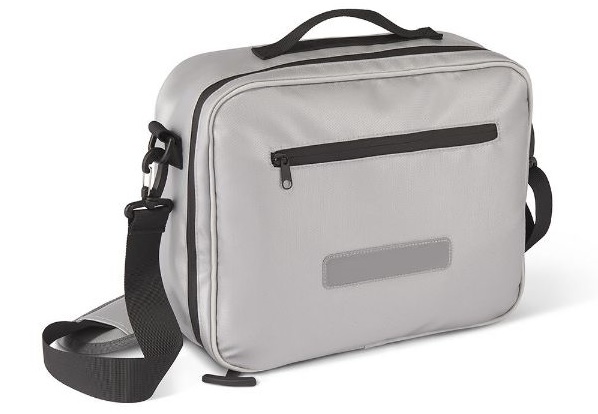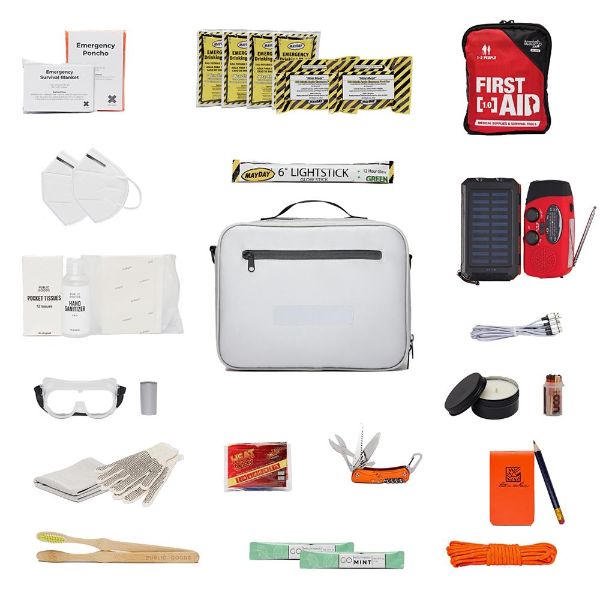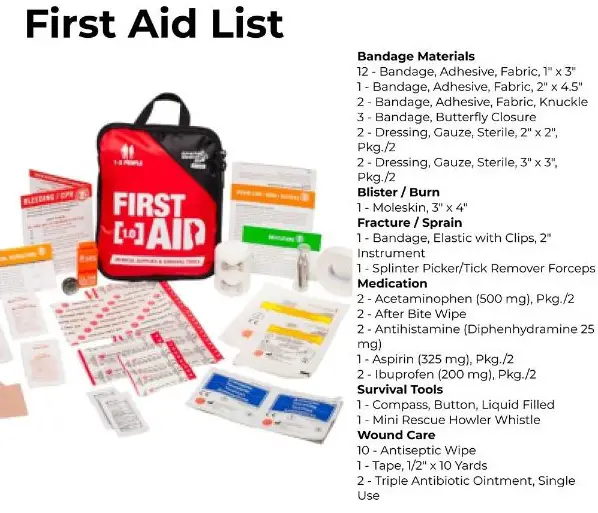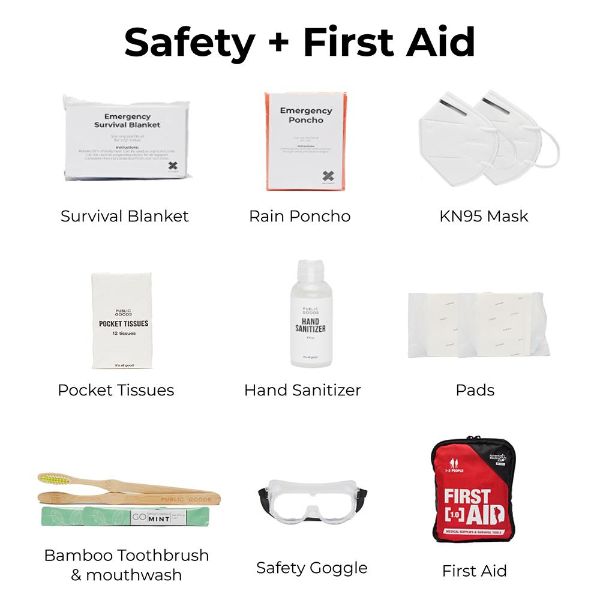This is the water-resistant and fireproof bag that contains crucial emergency supplies as well as first aid items.

It can be stored discretely in a car or closet, and it comes with a solar-powered and crank-powered emergency radio, a first-aid kit with 37 different items, and two servings of food and water rations.


Handwarmers, a survival blanket, a rain poncho, and a quick-drying towel are some examples of essential items that can be used to safeguard oneself from the elements.

In addition, it has a multi-tool that fits in your pocket, a solar power bank, a charging cable that works with any device, a glow stick, windproof matches, a compass, an emergency whistle, and some essential toiletries.
In addition, a document bag and box that are both water and fire resistant are included.

Constructed from fiberglass that has been coated with silicone and can withstand flames of up to 1,832 degrees Fahrenheit.

When it is completely full, the package tips the scales at 7 pounds.





An emergency preparedness kit for the home is a collection of essential items and supplies designed to help individuals and families effectively respond to and cope with emergency situations. These kits are assembled in advance to ensure that necessary provisions are readily available during times of crisis or unexpected events.
The contents of an emergency preparedness kit may vary depending on specific needs, geographical location, and individual preferences. However, there are several fundamental items that are commonly included in such kits:
- Water and food: Store an adequate supply of water, typically one gallon per person per day, for at least three days. Non-perishable food items such as canned goods, energy bars, and dried fruits should also be included. Remember to periodically rotate and replace food and water to ensure freshness.
- First aid supplies: A comprehensive first aid kit containing essential items such as bandages, gauze pads, adhesive tape, antiseptic wipes, pain relievers, and any necessary prescription medications should be included. It’s also recommended to include a first aid manual to provide guidance on administering basic medical care.
- Emergency communication: A battery-powered or hand-crank radio is essential to receive updates and important information during emergencies. Additionally, include extra batteries or a portable phone charger to keep communication devices powered.
- Lighting and power: Flashlights, preferably with extra batteries or rechargeable options, should be readily available. A battery-powered or hand-crank lantern can also provide ample illumination during power outages. Consider including a portable power bank to charge essential electronic devices.
- Shelter and warmth: Include lightweight emergency blankets or sleeping bags to provide warmth and insulation. A tent or tarp can also be useful for creating a temporary shelter in case of displacement.
- Tools and supplies: A multi-tool, duct tape, a whistle, a can opener, and a set of basic tools (such as pliers, wrenches, and screwdrivers) can be invaluable during emergencies. Plastic bags, personal hygiene items, and garbage bags should also be included.
- Personal documents: Keep copies of important documents such as identification cards, passports, insurance policies, medical records, and contact information in a waterproof container. It’s advisable to store these items securely and have digital copies accessible on a cloud storage platform.
- Cash and change: Keep a small amount of cash in your emergency kit, as ATMs and electronic payment systems may be unavailable during emergencies.
- Clothing and comfort: Include a change of clothes, sturdy shoes, and extra socks suitable for the weather conditions in your area. Consider adding personal comfort items such as a small pillow, blankets, or games for children.
- Emergency contact information: Compile a list of important phone numbers, including family members, emergency services, medical professionals, and utility companies. It’s also beneficial to have a local map and evacuation routes handy.
Regularly review and update your emergency preparedness kit to ensure that it remains current and meets the specific needs of your household. Check expiration dates of perishable items and replace any items that have been used or are nearing expiration.
In conclusion, an emergency preparedness kit for the home is a crucial resource that can help individuals and families cope with unexpected situations or emergencies. By assembling a well-stocked kit containing essential supplies, individuals can enhance their readiness and ability to respond effectively in times of crisis. Being prepared can provide peace of mind and contribute to the safety and well-being of all household members.

